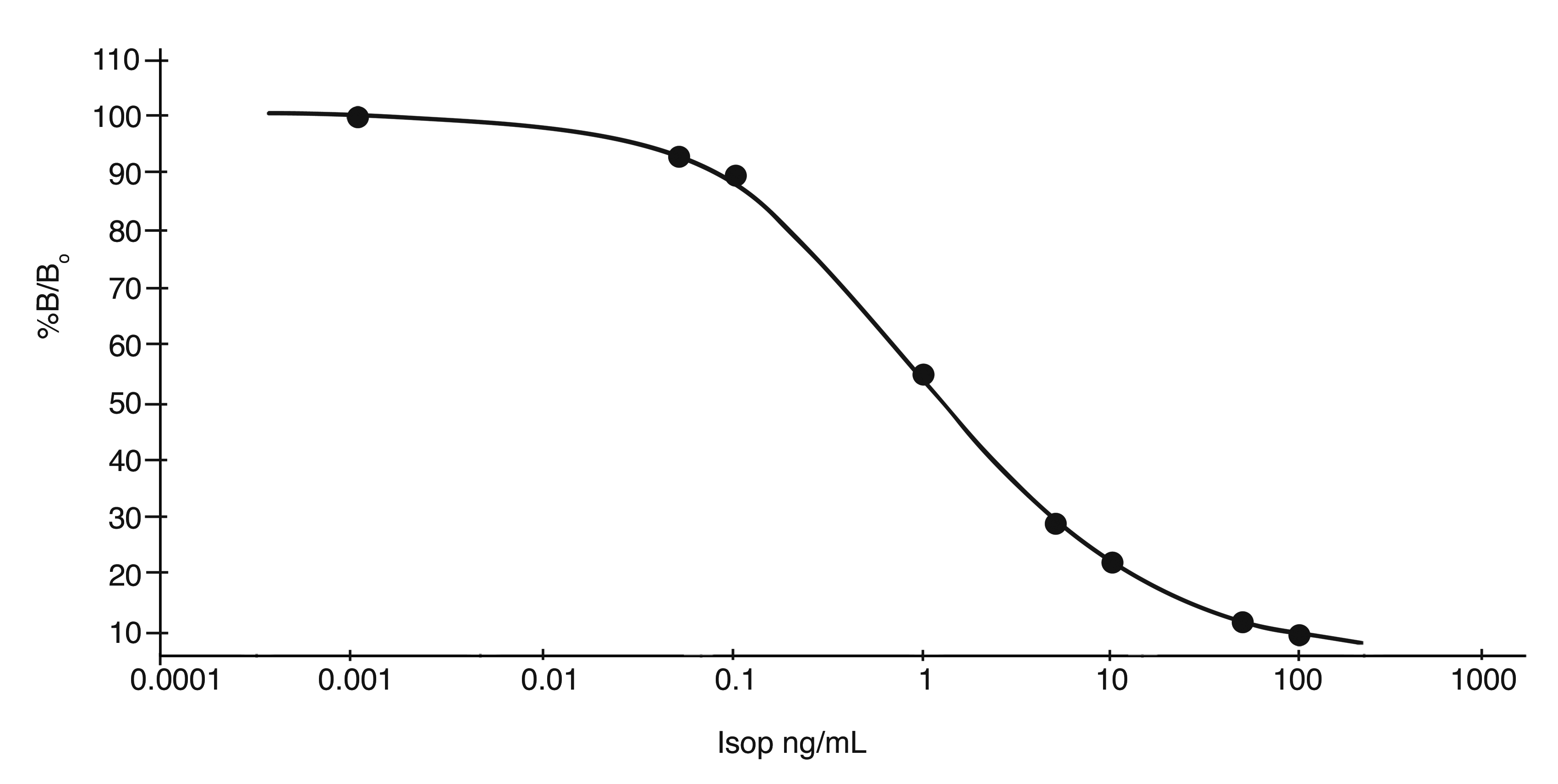Product Overview
Background
There is increasing evidence that isoprostanes, a novel class of prostaglandin-like compounds that are produced upon peroxidation of lipoproteins, play a causative role in artherogenesis. In normal humans, levels of the isoprostane 15-F2t-Isoprostane α (formerly 8-epi-Prostaglandin F2) range from 5-50 pg/mL plasma and 500 to 3000 pg/mg urinary creatinine, respectively. The in vivo concentration of F2- isoprostanes increases dramatically in animal models of lipid peroxidation. Measurement of isoprostane concentrations is likely to have significant diagnostic potential for assessment of oxidative stress and several disorders such as atherosclerosis, rheumatoid arthritis, and carcinogenesis. Urine and tissue culture supernatants can usually be assayed directly by diluting them with the EIA buffer using our EA85 kit. Otherwise, 15-F2t-Isoprostane can be extracted from plasma using Sep-Pak columns following a protocol provided with the kit.
Assay Principle
This kit is a competitive enzyme-linked immunoassay (ELISA) for determining levels of 15-F2t-Isoprostane in biological samples. Briefly, 15-F2t-Isoprostane in the samples or standards competes with 15-F2t-Isoprostane conjugated to horseradish peroxidase (HRP) for binding to a polyclonal antibody specific for 15-F2t-Isoprostane coated on the microplate. The HRP activity results in color development when the substrate is added, with the intensity of the color proportional to the amount of conjugated15-F2t-Isoprostane bound and inversely proportional to the amount of unconjugated 15-F2t-Isoprostane in the samples or standards.
Typical Standard Curve

Cross reactivity at 50% B/B0
15-isoprostane F2t 100.0%
9a,11b-PROSTAGLANDIN F2α 4.1%
13,14-DIHYDRO-15-KETO-F2α 3.0%
9b,11a-PROSTAGLANDIN F_α < 0.01%
PROSTAGLANDIN F_α < 0.01%
6-KETO-PROSTAGLANDIN F1α < 0.01%
PROSTAGLANDIN E_ < 0.01%
PROSTAGLANDIN D_ < 0.01%
ARACHIDONIC ACID < 0.01%
References
1. Morrow, J., et al. (1990) Anal. Biochem. 14:1-10
2. Morrow, J. D., et al., (1990) Proc. Natl. Acad. Sci. 87:9383-9387
3. Morrow, et al., (1997) Prog. Lipid Res. 36:1-21
4. Morrow, J., et al., (1992) Proc. Natl. Acad. Sci. 89:10721-10725
5. Wang, et al., (1995) J. Pharm. Exp. Ther. 275:94-100
6. Morrow, J., et al., (1999) Anal. Biochem. 269:326-331
7. Roberts II, L.J., Morrow, J.D., (2000) Free Radical Biol. Med. 28:505-513
8. Morrow, J.D., Roberts II, L.J., Meth. Enz. 300: 3-12
